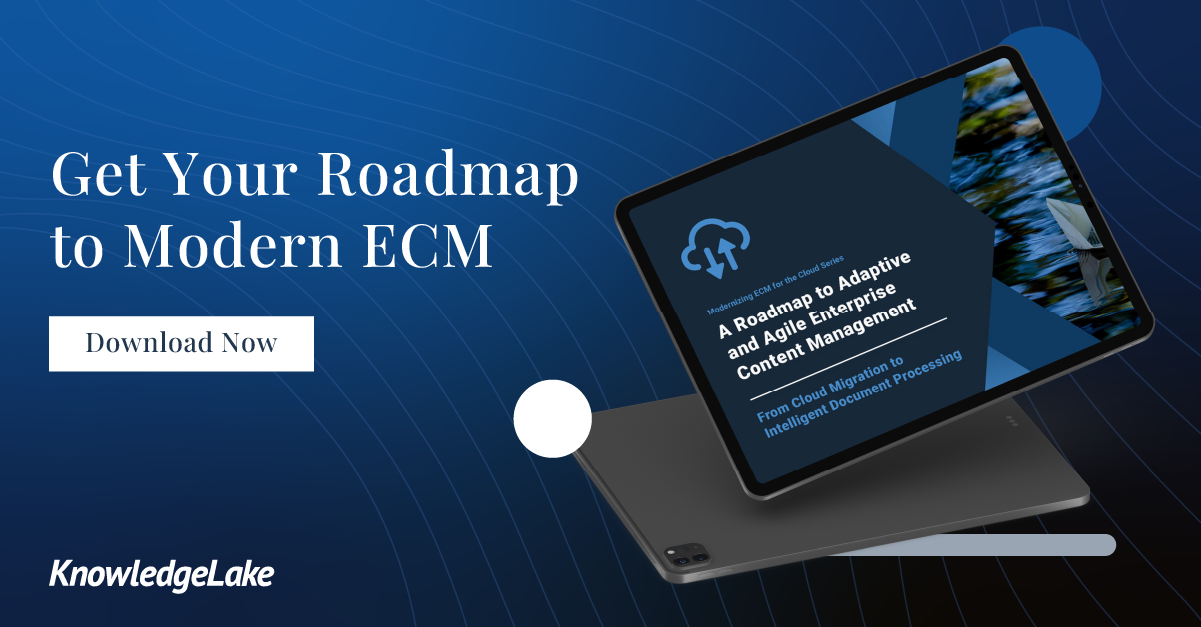Moving to Cloud-Based Content Management? 3 Key Considerations
For many IT leaders who have yet to modernize their ECM in the cloud, their hesitance can be best framed by the old saying, “better the devil you know than the devil you don’t.”
Few IT leaders shackle themselves to their legacy ECM system because they love it, or even because it does what it’s supposed to do. The issue is that making a transformational change can be scary. But there are also plenty of widespread misconceptions about cloud-based ECM modernization that have kept companies chained to their legacy ECM for years.
It runs counter to the expectation of IT leaders, but ECM modernization doesn’t need to be painful, expensive, or disruptive. Contrary to popular belief, cloud-based ECM modernization can be:
1. Painless
Years of legacy technology can make ECM modernization seem like a monumental undertaking. You may have been burned by a painful “rip and replace” migration in the past and are now (understandably) hesitant to move off your legacy ECM systems—no matter how much pain it may be causing you to stay.
Our advice? Start small to avoid any major disruptions to your existing processes. You don’t need to eat the elephant all at once. In fact, we strongly recommend that you don’t.
Starting small and scaling up as needed (or down if there’s a problem) allows you to slowly implement changes without any major disruptions to existing processes. This way, you can quickly catch any problems and adjust as needed. It also gives you more flexibility to ensure that all elements of the modernized system are fully functional before implementing them on a larger scale.
2. At or Under Budget
The cost of ECM modernization is a common worry for IT leaders, especially for those at smaller organizations with limited resources. But with proper planning and migration assistance, it's entirely possible to modernize your ECM on a budget.
Select an experienced cloud-based ECM migration partner that can guide you through the implementation. To avoid a big costly migration project, it’s key that they have a structured process that breaks down the work into smaller, independent pieces that can be stood up or scaled down as needed.
To make sure things stay on track, create realistic timelines and budgets for the project upfront and stick to them. Outline scope changes before work begins and establish criteria for approving them if needed.
Remember: only about 20% of any new initiative is truly about the software involved. The other 80% is about strategy, planning, training, and ongoing maintenance.
3. Enthusiastically Adopted by Employees
Employees can be hesitant to adopt new systems and processes, even if the ones they’re familiar with are a major source of frustration.
Adopting a people-first strategy in your modernization project will make it more likely that your employees will embrace new digital tools and processes. A people-first strategy prioritizes solving problems and creating efficiencies in users’ workdays and minimizing the impact of systems setup.
To do this right, ask your employees what tasks are taking up the most time. You’re looking for processes that are ripe for review and/or automation.
Redesign the work and identify improvements that can be made before factoring in technology. Then research the tools that you can give to employees to make these aspects of their job easier. The easier these tools are to use, the more likely they are to be adopted.
If you can show people how these new tools can improve their work, they’ll more readily come along.
Overcoming the Fear Factor
It's easy to understand why IT leaders can be hesitant to take on ECM modernization. The typical big migration project is costly, time-consuming, inflexible, and disruptive to existing workflows.
However, with an agile, people-first approach, ECM modernization can be achieved without pain or disruption to existing business processes.
Download our free eBook, A Roadmap to Adaptive and Agile Enterprise Content Management, to begin mapping your own road to ECM modernization.

